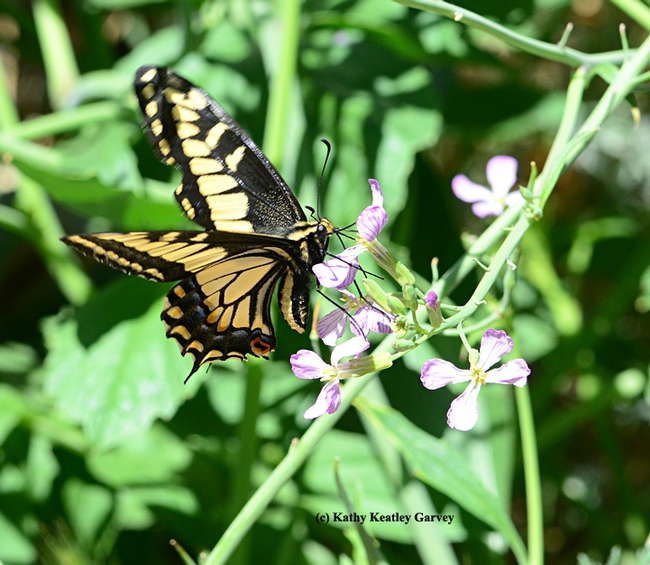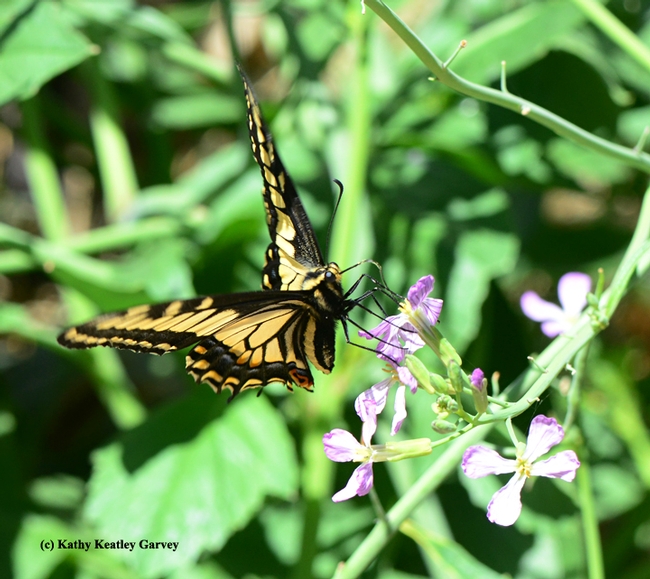It's a joy to see the anise swallowtail (Papilio zelicaon) fluttering around in community gardens, bee gardens and parks.
Last weekend in a Benicia community garden, we spotted this sunny butterfly, as identified by Art Shapiro, distinguished professor of evolution and ecology at UC Davis, who monitors Central California butterflies and posts information on his website, Art's Butterfly World.
Its distinctive yellow, blue and blue colors remind us of the Western tiger swallowtail (Papilio rutulus).
Unlike the Western tiger swallowtail, however, the anise swallowtail has large patches of black on the front portion of its forewing.
You'll see the anise swallowtail around its host plant, fennel, Foeniculum vulgare, a weed with a licorice aroma. Anise swallowtails breed on the anise and poison hemlock, Conium maculatum, Shapiro says.
Last weekend in Benicia, the anise swallowtail took an interest in wild radish.
Check out the beautiful photos of the anise swallowtail on BugGuide.net, which says it was first described in 1852 by Hippolyte Lucas as Papilio zelicaon. That was during California's Gold Rush Days and a year later, in 1853, settlers introduced the European or Western honey bee to California.
Attached Images:

Anise swallowtail visiting a community park in Benicia. (Photo by Kathy Keatley Garvey)

Anise swallowtail foraging on wild radish. (Photo by Kathy Keatley Garvey)

We have liftoff! Anise swallowtail leaves the wild radish. (Photo by Kathy Keatley Garvey)

Caterpillar of the anise swallowtail. (Photo by Kathy Keatley Garvey)